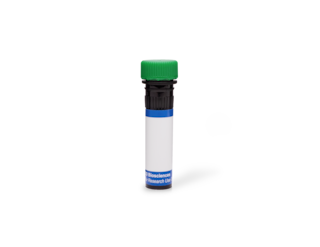-
Reagents
- Flow Cytometry Reagents
-
Western Blotting and Molecular Reagents
- Immunoassay Reagents
-
Single-Cell Multiomics Reagents
- BD® OMICS-Guard Sample Preservation Buffer
- BD® AbSeq Assay
- BD® Single-Cell Multiplexing Kit
- BD Rhapsody™ ATAC-Seq Assays
- BD Rhapsody™ Whole Transcriptome Analysis (WTA) Amplification Kit
- BD Rhapsody™ TCR/BCR Next Multiomic Assays
- BD Rhapsody™ Targeted mRNA Kits
- BD Rhapsody™ Accessory Kits
- BD® OMICS-One Protein Panels
- BD OMICS-One™ WTA Next Assay
-
Functional Assays
-
Microscopy and Imaging Reagents
-
Cell Preparation and Separation Reagents
Old Browser
This page has been recently translated and is available in French now.
Looks like you're visiting us from {countryName}.
Would you like to stay on the current location site or be switched to your location?
BD Transduction Laboratories™ Purified Mouse Anti-FKBP12
Clone 8/FKBP12 (RUO)





Western blot analysis of FKBP12 on a SW-13 cell lysate (Human adrenal gland carcinoma; ATCC CCL-105). Lane 1: 1:1000, lane 2: 1:2000, lane 3: 1:4000 dilution of the mouse anti-FKBP12 antibody.

Western blot analysis of FKBP12 on a SW-13 cell lysate (Human adrenal gland carcinoma; ATCC CCL-105). Lane 1: 1:1000, lane 2: 1:2000, lane 3: 1:4000 dilution of the mouse anti-FKBP12 antibody.

Immunofluorescence staining of HS 766T cells (Human pancreatic carcinoma; ATCC HTB-134).




Regulatory Status Legend
Any use of products other than the permitted use without the express written authorization of Becton, Dickinson and Company is strictly prohibited.
Preparation And Storage
Recommended Assay Procedures
Western blot: Please refer to http://www.bdbiosciences.com/pharmingen/protocols/Western_Blotting.shtml
Product Notices
- Since applications vary, each investigator should titrate the reagent to obtain optimal results.
- Please refer to www.bdbiosciences.com/us/s/resources for technical protocols.
- Caution: Sodium azide yields highly toxic hydrazoic acid under acidic conditions. Dilute azide compounds in running water before discarding to avoid accumulation of potentially explosive deposits in plumbing.
- Source of all serum proteins is from USDA inspected abattoirs located in the United States.
Companion Products


Transforming growth factor-β binds to the TGFβ family of heteromeric serine/threonine transmembrane receptors (type I and type II). Following binding of TGFβ, the type II receptor (TβR-II) phosphorylates the type I receptor (TβR-I) which, in turn, conveys the signal. Since TβR-I and TβR-II can interact without the stimulation of TGFβ, leading to unwanted activation, a regulatory mechanism exists. In a yeast genetic screen, immunophilin FKBP12 was associated with the type I receptor. Studies including co-immunoprecipiation, deletion, and point mutations confirmed this interaction. FKBP12 inhibits TβR-II mediated phosphorylation of TβR-I, inhibiting activation. FKBP12 binds via its rapamycin/Leu-Pro binding pocket to the Leu-Pro sequence adjacent to the phosphorylation site of TβR-I. This interaction is blocked by the addition of macrolides, rapamycin, and FK506. Furthermore, mutations in the binding sites of FKBP12 and TβR-I abrogates the binding and results in activation of the receptor without the addition of TGFβ. Thus, FKBP12 is a regulatory protein for TβR-I and TβR-II-mediated signaling.
Development References (2)
-
Chen YG, Liu F, Massague J. Mechanism of TGFbeta receptor inhibition by FKBP12. EMBO J. 1997; 16(13):3866-3876. (Biology). View Reference
-
Wang T, Donahoe PK, Zervos AS. Specific interaction of type I receptors of the TGF-beta family with the immunophilin FKBP-12. Science. 1994; 265(5172):674-676. (Biology). View Reference
Please refer to Support Documents for Quality Certificates
Global - Refer to manufacturer's instructions for use and related User Manuals and Technical data sheets before using this products as described
Comparisons, where applicable, are made against older BD Technology, manual methods or are general performance claims. Comparisons are not made against non-BD technologies, unless otherwise noted.
For Research Use Only. Not for use in diagnostic or therapeutic procedures.